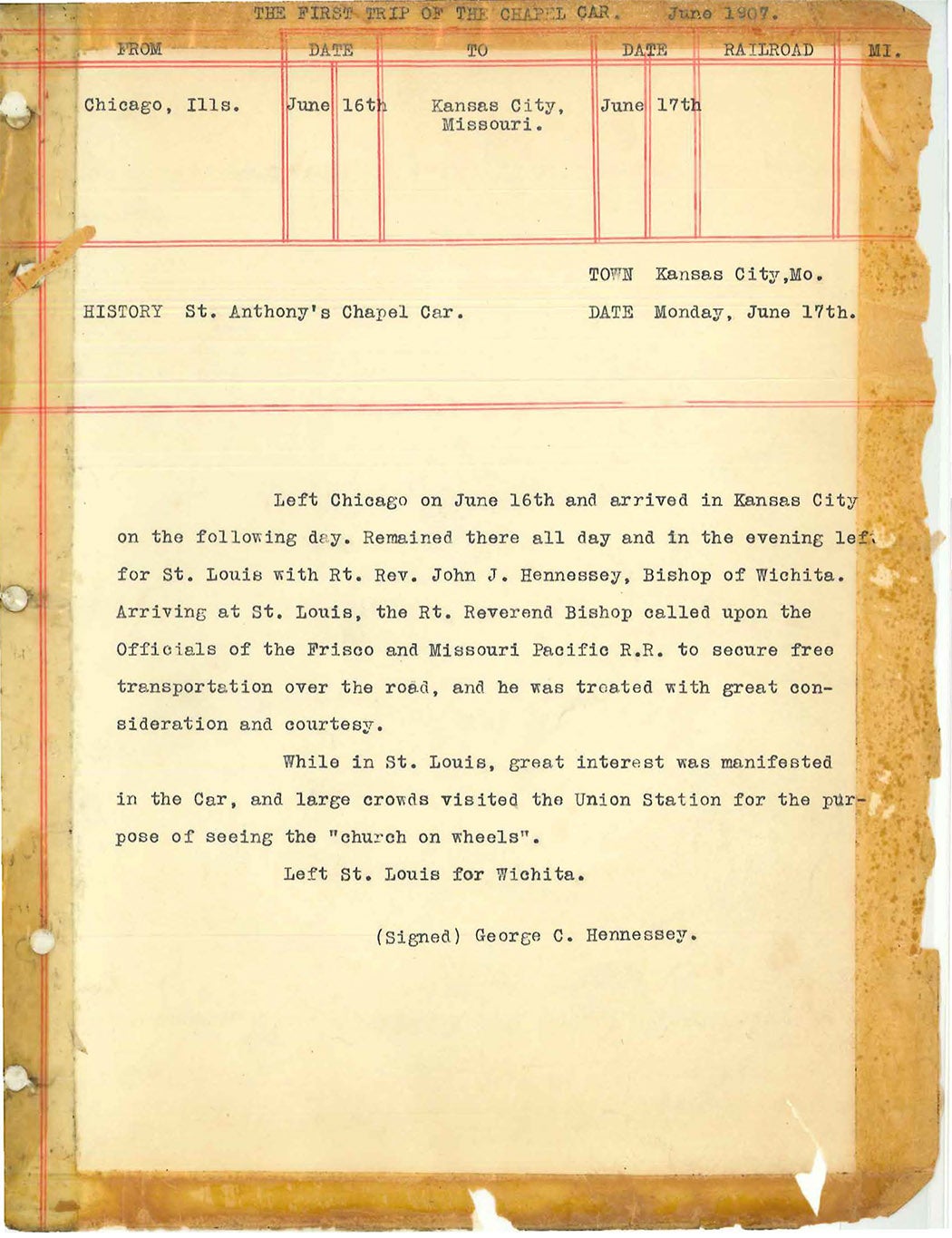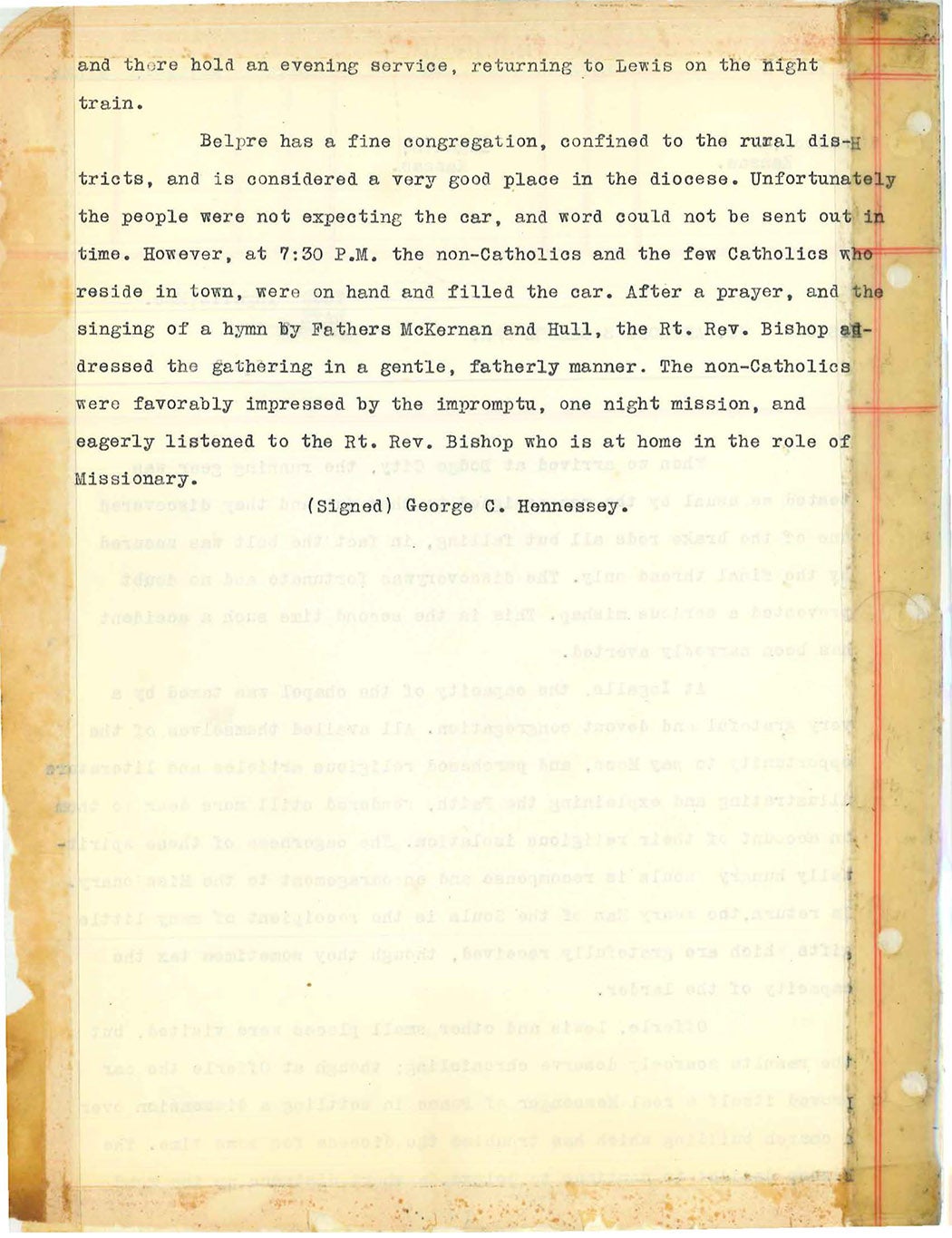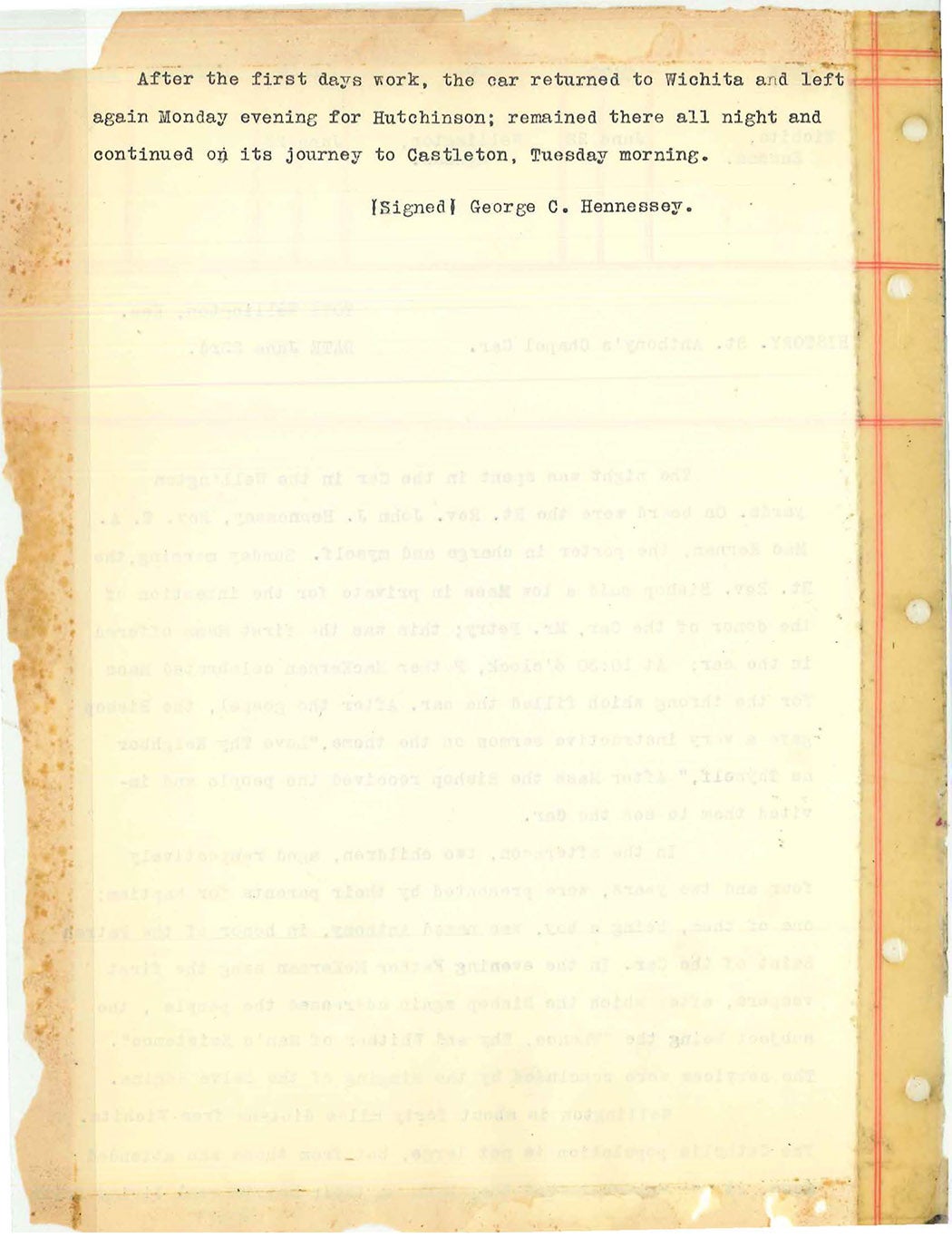It’s a familiar story for many of us, how the railroad changed the American continent, accelerating expansion westward and fueling the myth of the American West. Less is known about how railroad chapel cars helped shape the Christian religious landscape of America in the late nineteenth and early twentieth centuries. A collection of chapel car photographs, logs, and financial reports from Loyola University Chicago recently added to JSTOR will help fill the gap.
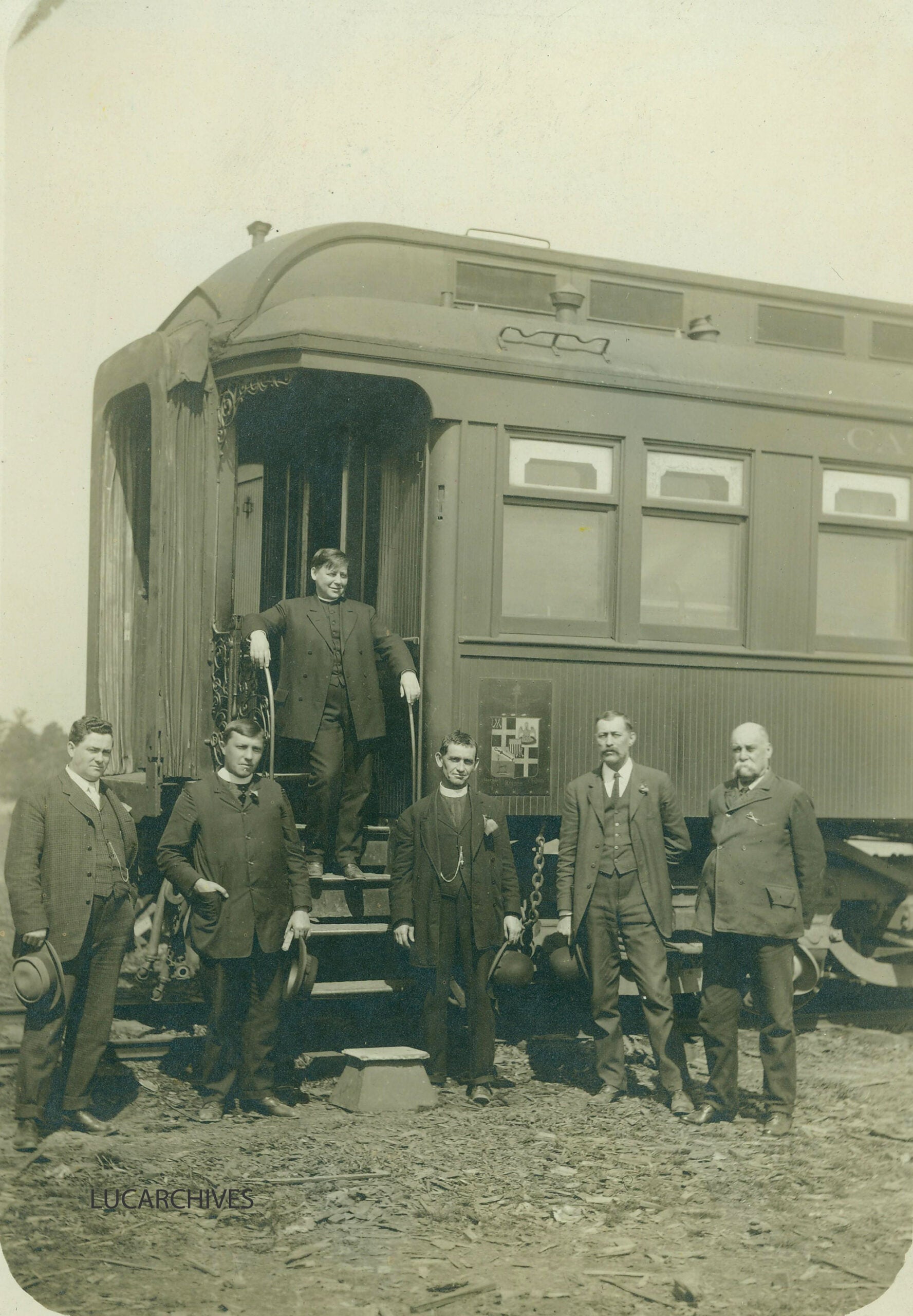
The railroad chapel cars, which were first used in the United States by Protestant denominations, were mobile churches that traveled from town to town, providing religious services to the people living in remote communities where there was no church. The first American chapel car was built by the Episcopal Church in 1890 and was followed very quickly by several others operated by the Baptists.
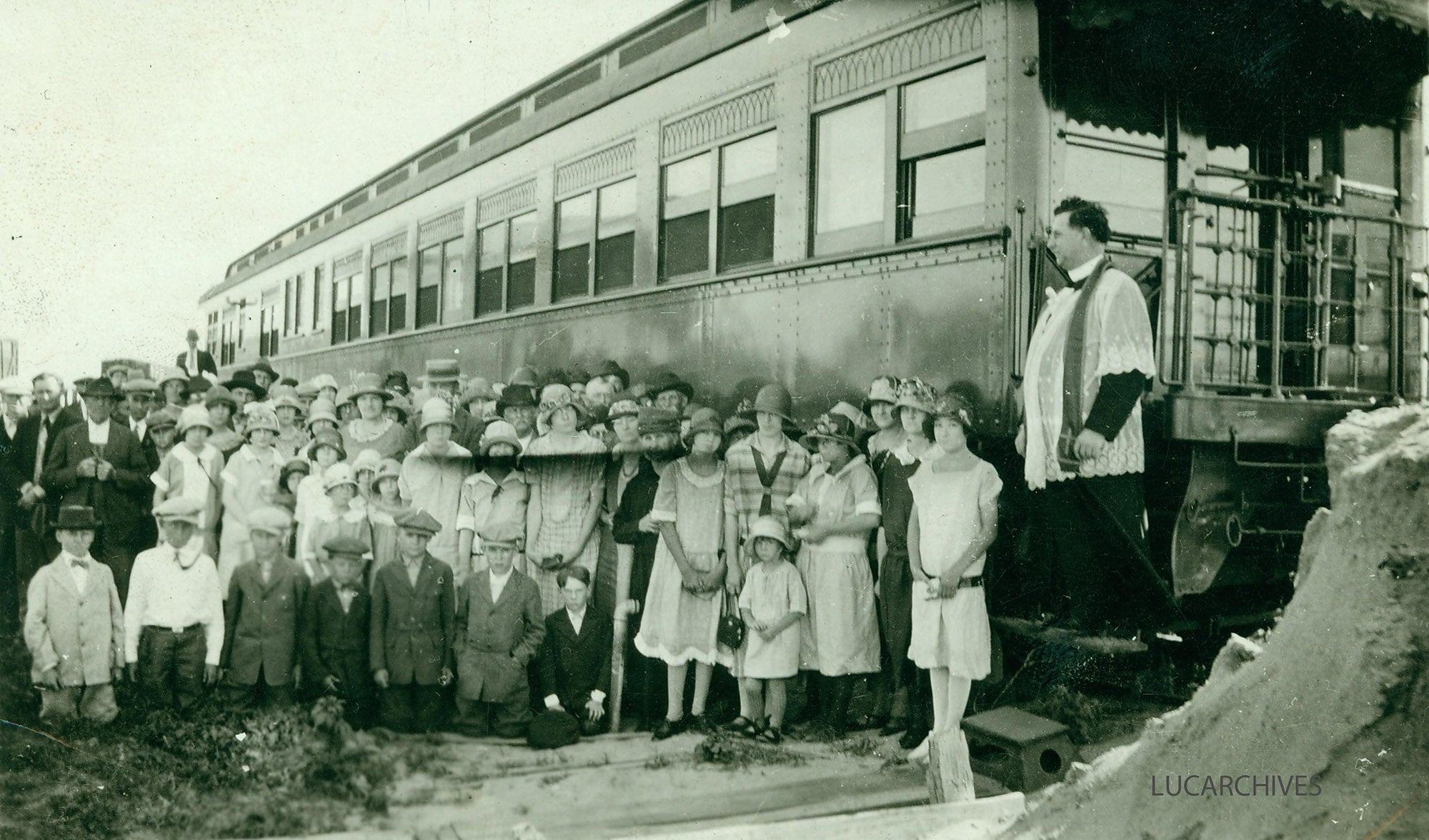
In their article, “The Story of Americas Chapel Cars,” rail historians Wilma Taylor and Norman Taylor trace the origins of American chapel cars to the late nineteenth century, when the growth of the railroad industry made it possible to travel across the country quickly and efficiently. Hundreds of small towns had sprung up along the rail lines; most were too small to support clergy and had no dedicated houses of worship. Enter the railroad chapel cars.
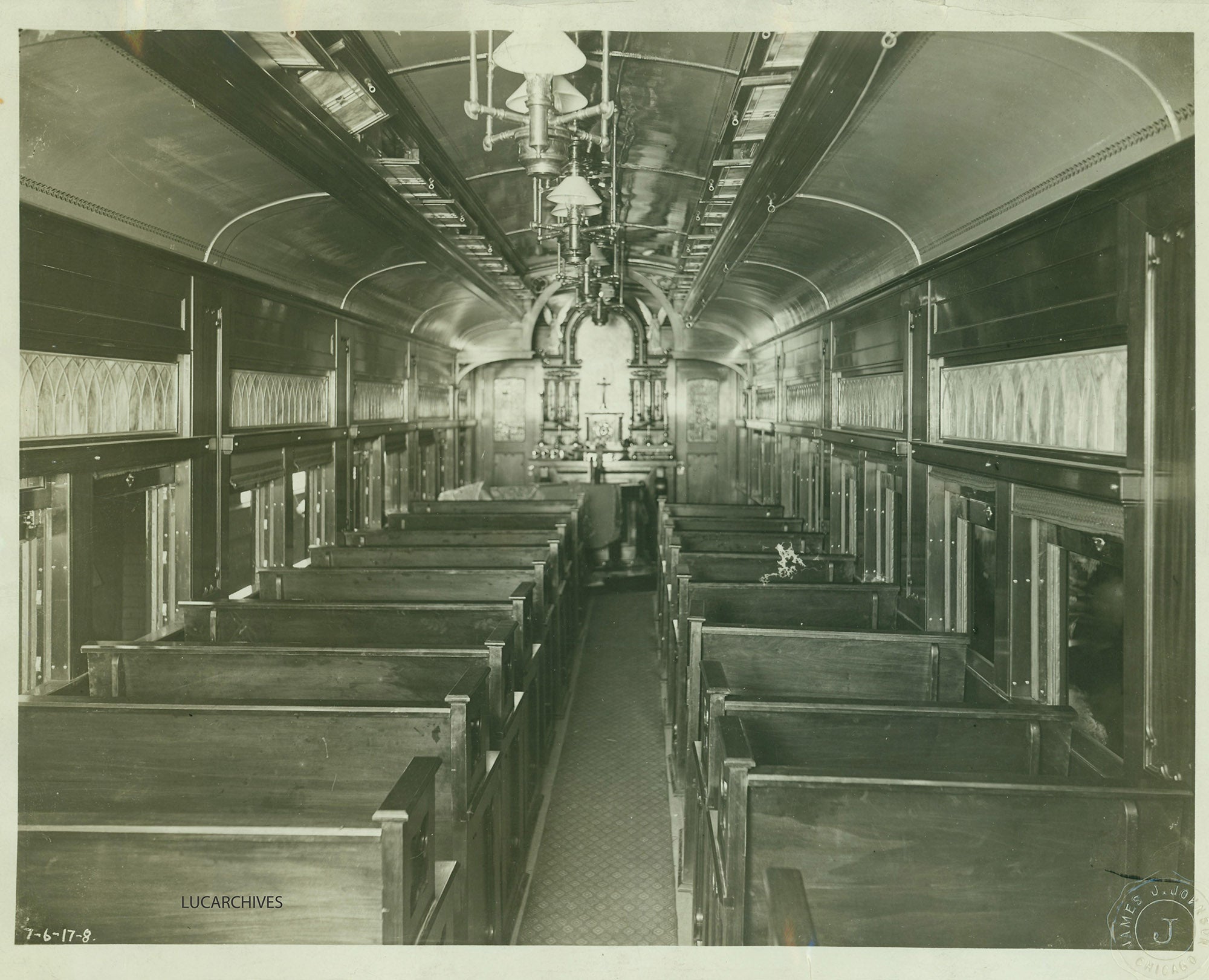
The idea for creating a church inside a rail car actually came from Russia. According to Taylor and Taylor, “the earliest true ‘church on rails’ was the train of three (some say five) beautiful Russian Orthodox church cars that moved with the construction gangs first along the Trans-Caspian and then along the Trans-Siberian Railroad.” The cars were fitted with carved wooden altars, lit by tallow candles, and heated with a wood stove. There were no pews because the congregation, called to worship by a bell atop the cars, did so standing up.

The lavish Orthodox train cars made an impression on an Episcopalian Bishop from North Dakota named William David Walker, who saw them on a trip to Russia in the late 1880s. Upon his return to the United States, he commissioned the first American chapel car from the Pullman Palace Car Company in 1890 on behalf of the Episcopalian Church of North Dakota. The sixty-foot-long car, known as The Church of the Advent, or the Cathedral Car of North Dakota, was finished in oak and much simpler than the Russian Orthodox cars. Inside, it was filled with pews. Taylor and Taylor describe its reception:
The Episcopal chapel car was well received. People praised it for its compactness, dignity, and simple, churchly beauty. The bishop’s spartan way of living accounted for much of his success with the rough pioneer men. He cooked his own meals, made his own bed, swept the floor, distributed leaflets, made the fires, and kept the car in order; he usually played the organ as well.
Weekly Newsletter
That same year, a Baptist pastor named Dr. Wayland Hoyt took a rail trip through Wisconsin and Minnesota. Dr. Hoyt noted “that all the little new towns had from one to five saloons, but scores of towns had no place to worship at all.”
Working with his brother, Dr. Hoyt appealed to John D. Rockefeller, Sr. and other well-known Baptist industrialists of the time to fund the creation of a series of Baptist rail cars. The first, named Evangel, was dedicated in Cincinnati at the the American Baptist Publication Society meeting on May 23, 1891. Boston Smith, a layman who served as Sunday school missionary for the society, was chosen to take the car on its first test journey, but not before Hoyt secured a letter from the manager of the Northern Pacific Railroad authorizing rail superintendents to allow the Evangel free movement along the tracks. This free passage, which was granted to most chapel cars thereafter until World War I, was crucial to their success. Without the gift of free passage, operating the chapel cars would have been cost prohibitive.
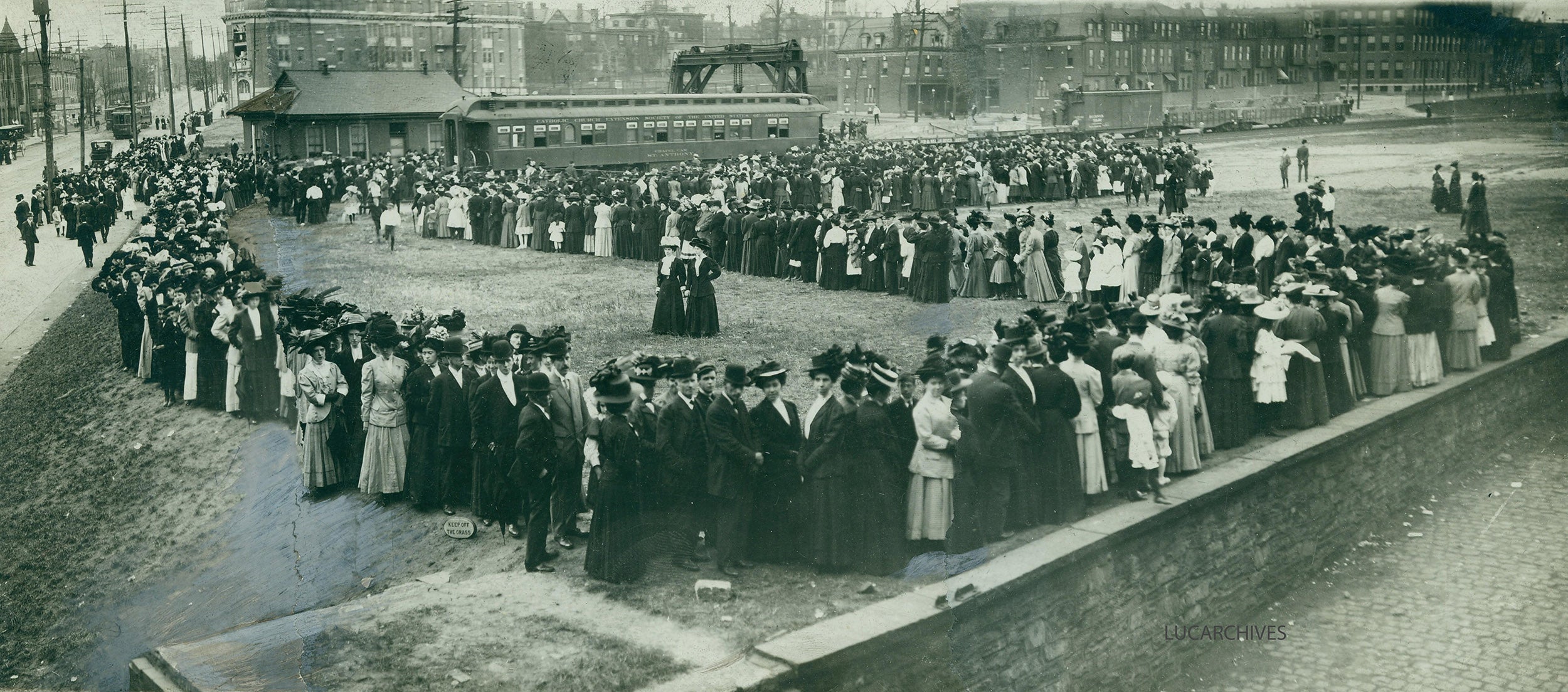
Eventually, the Baptist chapel car ministry came to the attention of Catholic priest Francis Clement Kelley. Taylor and Taylor report that “Father Kelley saw the fifth Baptist railcar chapel Messenger of Peace at the St. Louis World’s Fair in 1904,” where it sat in the Transportation Building. He wanted one for the Catholics.
The first Catholic car was purchased second-hand from the Pullman company in Chicago and blessed on June 16, 1906 at Union Station. It was named St. Anthony “in honor of the patron saint of lost things.” Seventy feet long, it had special drawers and compartments to hold sacred vessels and vestments. The candlesticks and crucifix were held down by screws and the movable communion railing doubled as a confessional. It sat fifty worshippers, but could accommodate sixty-five in a pinch. From 1907 to 1909, St. Anthony served Kansas and South Dakota. A log in the Loyola Collection recorded details of its 1907 stops:
Between 1890 and 1946, thirteen chapel cars made their way across America’s west, northwest, south, and southeast. But by the end of World War II, the chapel car era had come to end.
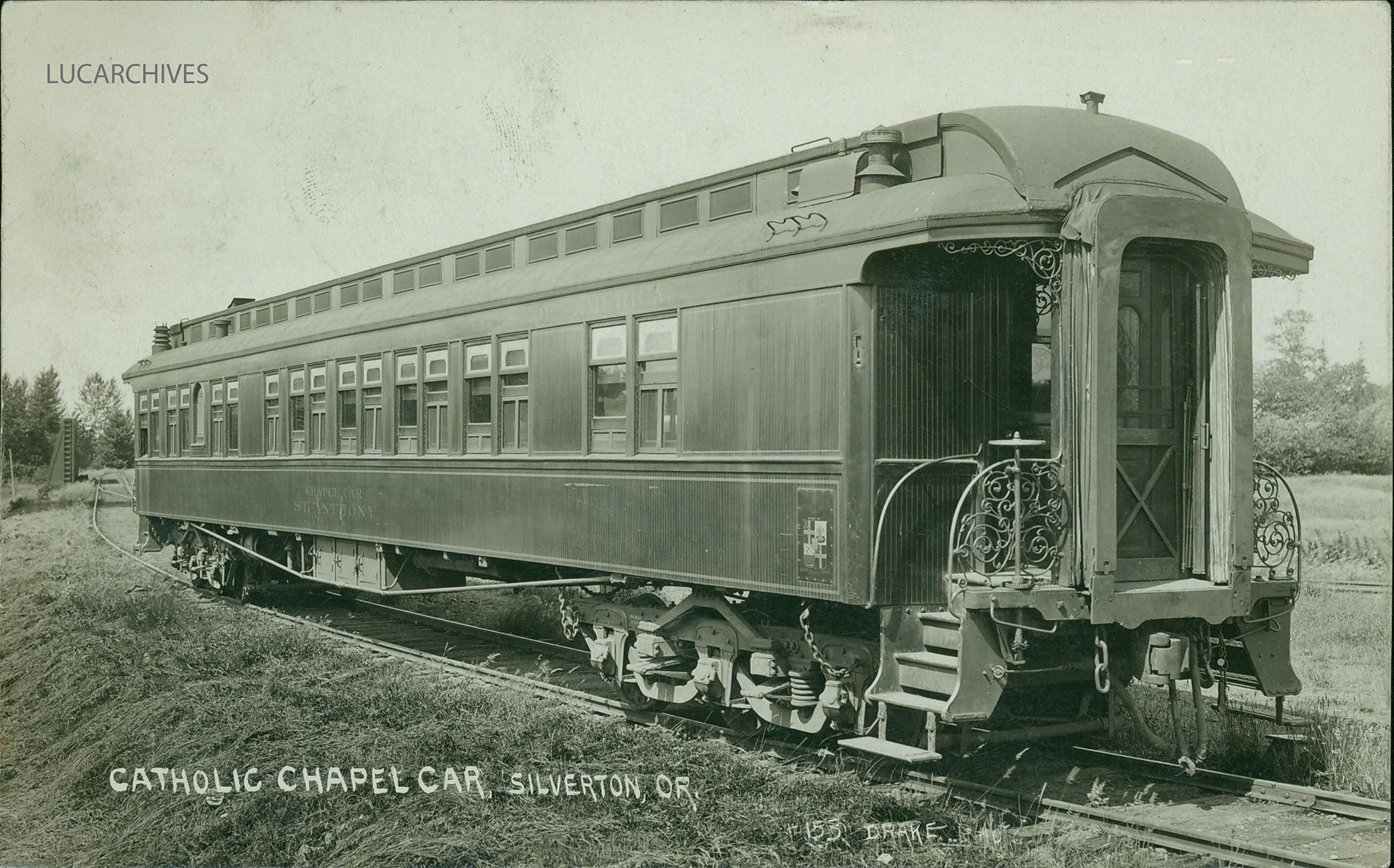
Taylor and Taylor document most of these thirteen cars in great detail, recording where they traveled and how they affected the communities they visited. As they note,
Not only did they bring the message of Christianity to people who had never had access to it before, but they also provided a social network and support system that was otherwise not available. The chapel cars also served as a bridge between generations, as the elderly shared their faith and wisdom with the younger members of the congregation.
According to Taylor and Taylor, the chapel cars created a safe space for those who were outsiders in their own communities. In fact, “[s]ome of the cars were specifically designed to welcome African Americans and members of other minority religions who were not accepted in other churches.”
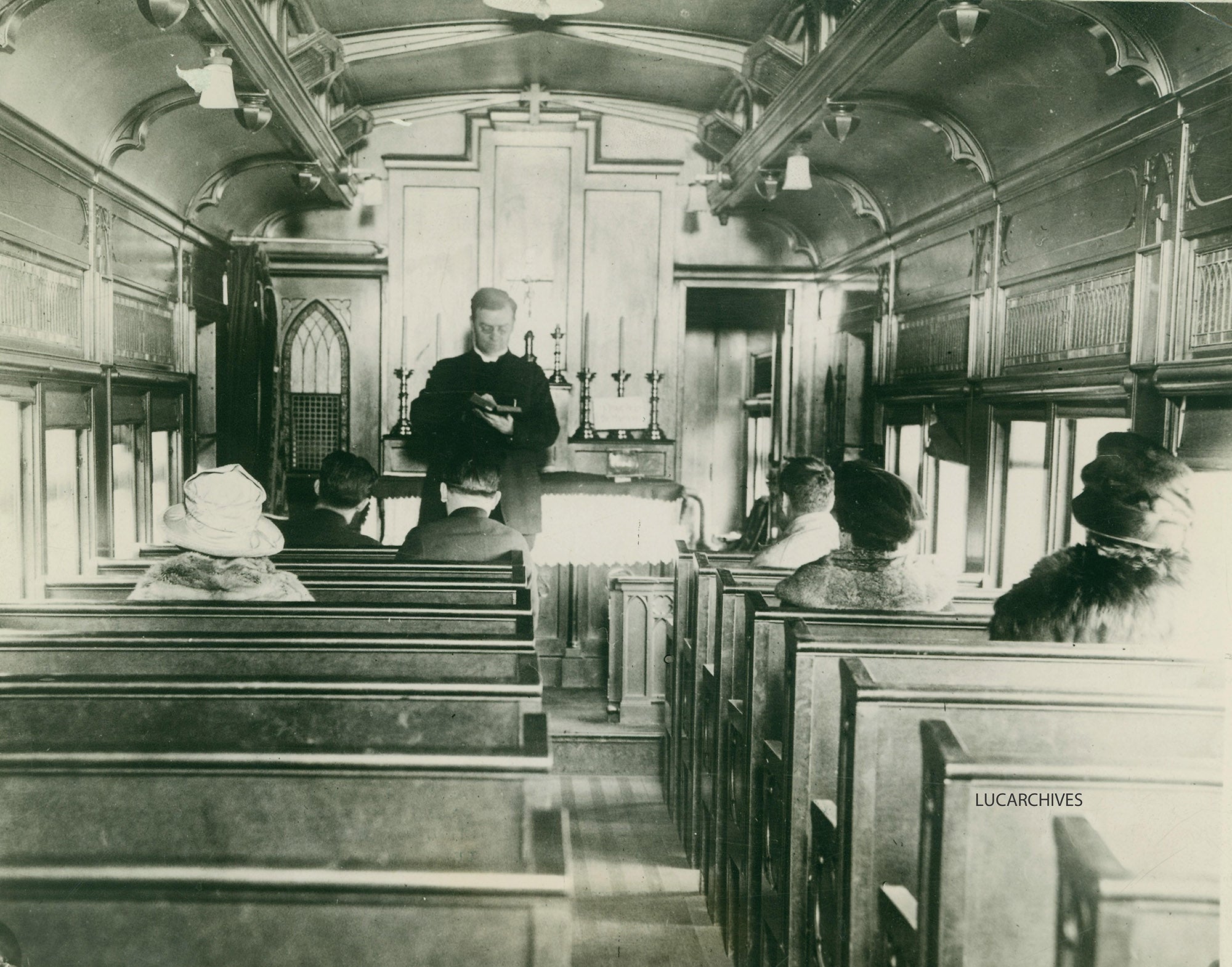
While the chapel cars were a great success in the first half of the twentieth century, it’s no surprise that their popularity waned as automobiles began to replace the railway as the primary form of transportation. The chapel car concept was eventually abandoned, with the last car retired in the 1970s.
Support JSTOR Daily! Join our new membership program on Patreon today.



